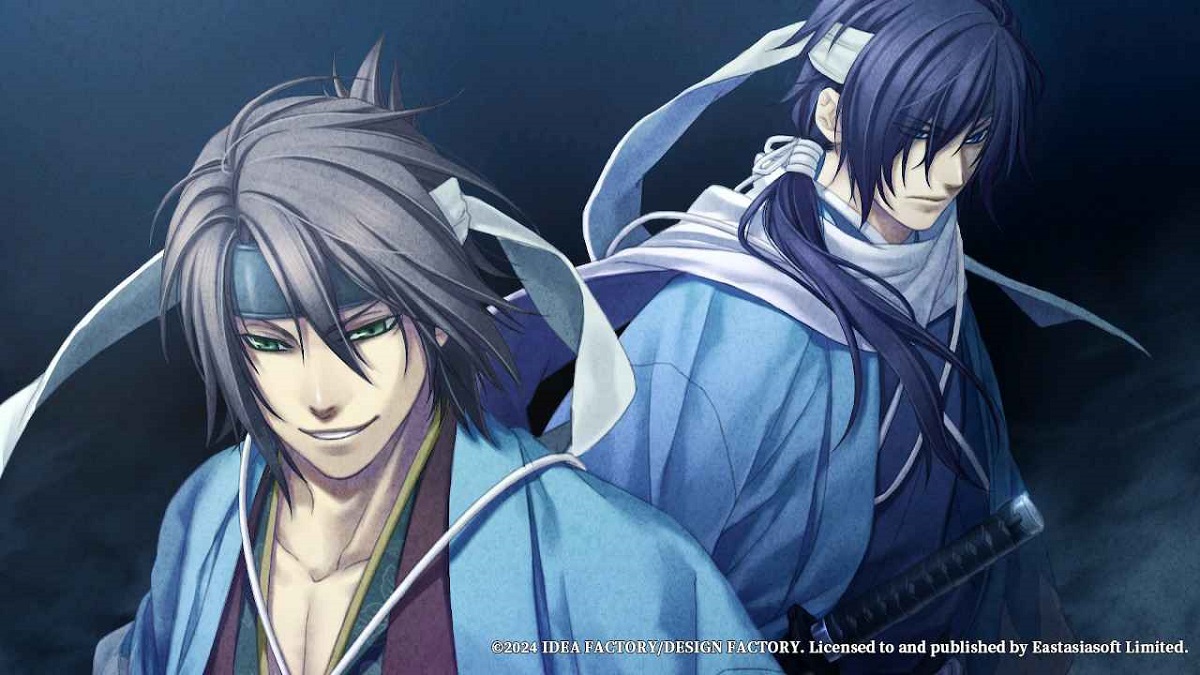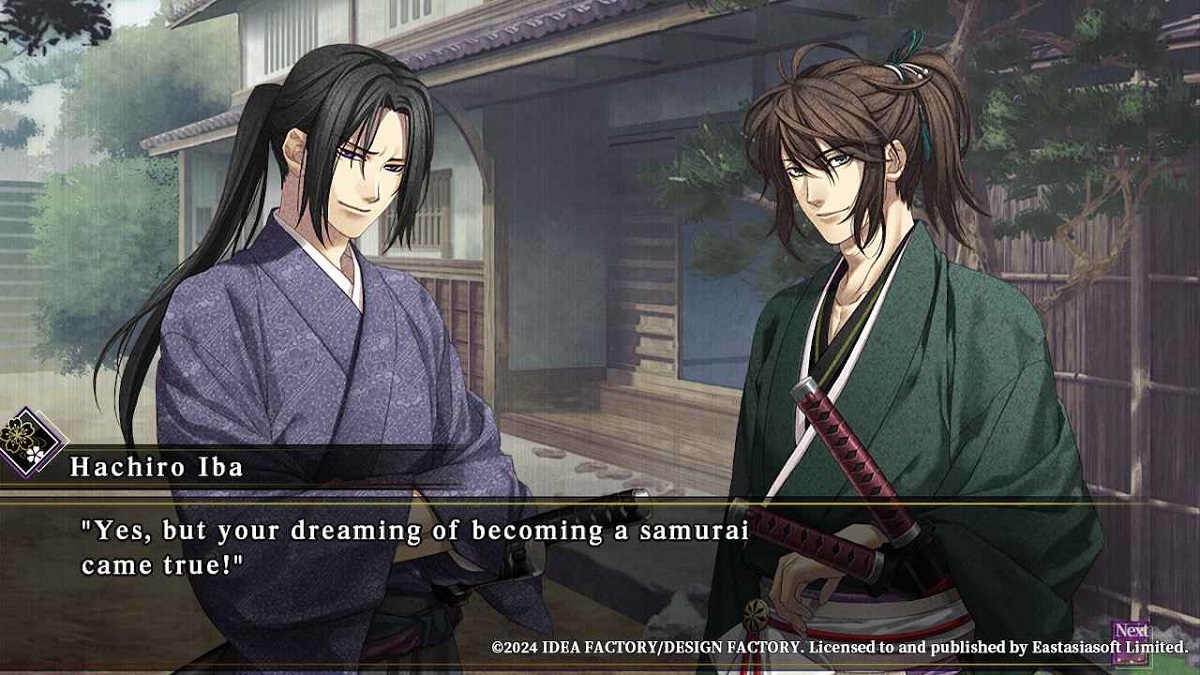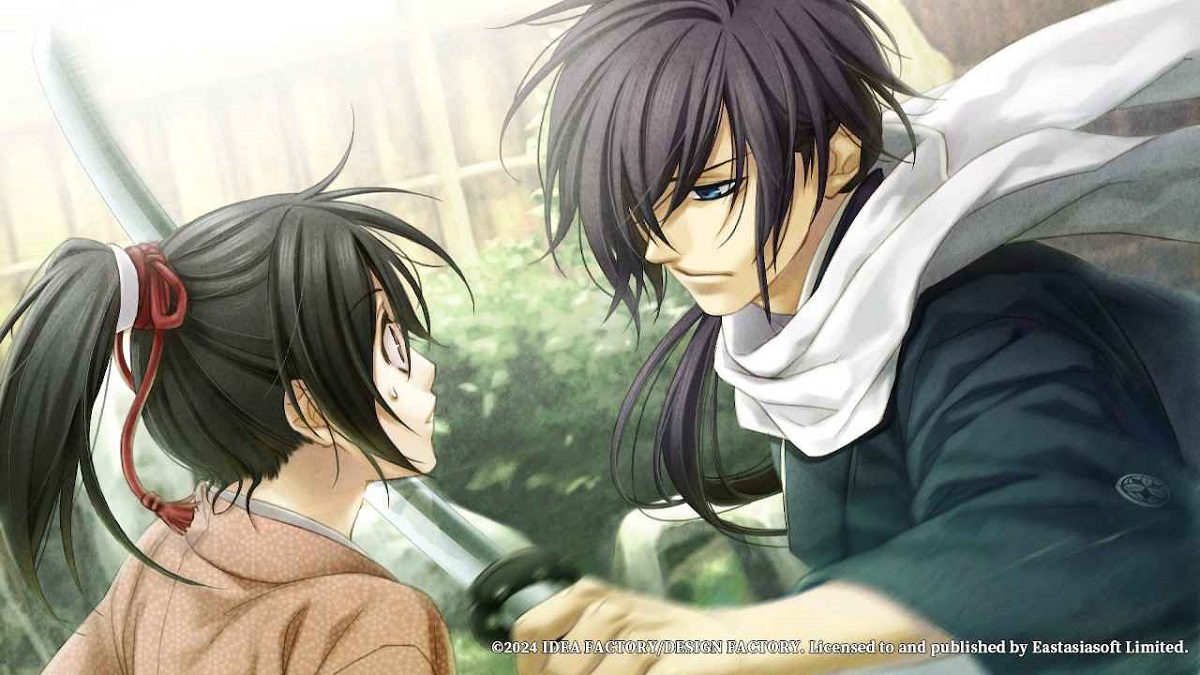With two otome visual novels to read through and a veritable army of potential boyfriends to romance, Hakuoki: Chronicles of Wind and Blossom feels like it’s worth every penny. Despite its age, Otomate’s consistent art style (for better or for worse) and the relatively sharp visuals keep this historical tale modern.
When I was a kid, I knew about Hakuoki in passing. My friend played it and came to school crying about Okita. Another friend watched the show and came out of it talking about how Okita is pretty great. So all I knew about Hakuouki prior to playing this on the Switch was that apparently, Okita is popular (hardly a surprise). So you can imagine my surprise when I learned that not only is Hijikata the actual canon love interest, but the story features vampires?! It was a huge shock to me, and I couldn’t help but burst into laughter. I’d spent sixteen years of my life thinking Hakuoki is a normal piece of historical fiction, only for it to be a historical fantasy otome instead.
Hakuoki covers the tale of Chizuru Yukimura, who’s looking for her father, who is a missing doctor. (As a note, you can change her name if you want, but I recommend just keeping it so voiced lines don’t cut off.) Chizuru is a normal girl, outside of the fact that she can heal abnormally fast. She visits Kyoto while disguising herself as a male. However, she ends up getting into trouble with the notorious Shinsengumi when she sees something she shouldn’t have: Shinsengumi warriors losing control at the sight of blood and going berserk. In order to make sure she doesn’t blab about this to people, they force her to live with them. In time, they accept her as one of their own.

If you’re familiar with even a little bit of 18th to 19th century Japan and its politics, then you’ll be able to recognize a lot of the story beats when it focuses on the social and political climate surrounding the Shinsengumi. At times, the sheer level of detail the game gives about the group’s history can clash with the more fantastical elements. The priorities just felt unbalanced. It started getting better later, but in the earlier chapters of the first game it almost felt like they were two separate stories that became one during development even originally. Some of the characters are new additions added in the Kyoto Winds and Edo Blossoms releases. Not everyone meshed well together at first. It’s very obvious who’s new and who isn’t, because new characters just seem to randomly appear before disappearing for large stretches of the story.
As a whole, the localization is good. But when there were errors, they were usually ones that really stuck out. Iba’s introduction scene, for example, made a deep impression on me for reasons other than Mamoru Miyano. I had to re-read lines so many times to make sure my eyes and brain were working alright, especially since playing the game was the first thing I did that morning. When explaining the Water of Life (the serum that turns people into Furies), the doctor notes that the Chinese call it “xindn.” There is no such word. Most likely, they meant “xiandan,” if we’re using the Mandarin pronunciation.

I know that there is a lot of text to go through. I can’t even count how many times I thought to myself that I don’t envy the localizers for the workload and large amount of historical terms. But it’s precisely because the rest of the game reads well that these slip-ups become a lot more jarring.
The prevalence of terms specific to Japanese history can be confusing if you’re not paying attention or if you’re unfamiliar with the subject. I found myself going through the glossary multiple times because I couldn’t remember certain allegiances. The story goes through the Shinsengumi history quite quickly, so sometimes it can be hard to follow. It definitely feels like Otomate aimed it at Japanese people who already learned about all of this in school.
Something about Hakuoki that I liked was that the story and characters took center stage in this otome game, rather than the romance. It’s hard for me to self-insert myself in the protagonist a lot of times in these otome games. I couldn’t connect with Chizuru at all and because she’s a self-insert, she wasn’t always the most interesting character to observe from an outsider’s perspective. Maybe at the time of the game’s original release, she was a breath of fresh air. Despite her overly considerate personality and her attempts to help even in situations where she can’t help at all, she does take a proactive stance in the story. However, you could say that about tons of other otome game protagonists too. When I translated Winter’s Wish: Spirits of Edo, I had a positive opinion of Suzuno precisely because of this personality type.

Despite Chizuru becoming the blueprint, rather than the exception, I enjoyed the plot and the characters nonetheless. I genuinely wanted characters like Harada, Heisuke, and Iba to get a happy ending. For the sheer amount of boys there are, the writing does a good job of giving them plenty of characterization and development beyond their basic tropes or shticks. To be frank, I didn’t finish all the routes in the game yet, but I’m excited to go back in and see what other interesting stories I still have to discover.
For both positive and negative reasons, Hakuoki: Chronicles of Wind and Blossom is a classic otome. The quality of the story and the characters are really good, and I can understand why people loved it. But playing it in 2024 after so many other otome games (and from Otomate to boot), it’s hard for me to see what made Hakuoki the special juggernaut it was at the time. Is it good? Oh yeah, if you’re big into otome or historical fantasy games. It’s great that you get both the Edo and Kyoto arcs in one convenient package without having to pay for two games like in certain releases. This is a game that stands very well on its own. But those curious about the legendary reputation of Hakuoki may come out of it scratching their head.
Hakuoki: Chronicles of Wind and Blossom is readily available on the Nintendo Switch.
Players take the role of young heroine Chizuru as she is surrounded by the handsome warriors of the Shinsengumi. As battle ensues, who will emerge victorious and who will claim Chizuru’s heart?
A strong visual novel that blends political intrigue with romantic drama, but has served as a blueprint for so many other games in the genre that it can feel generic if you're aware of the reputation the game has. Enjoying it on its own merit requires forgetting everything you ever heard about Hakuoki, and approaching it with an open mind.
- The game really picks up once you enter specific routes and especially after it gets to the Edo arc.
- I'm really surprised I heard so little about Heisuke's route from my friends and acquaintances who played Hakuoki. I think his was really fun if we focus more on his personal character development rather than purely the romance.
- The audio mixing in the game is wild. Turn it up because Kenjiro Tsuda is way too quiet (again) and then Shinichiro Miki will show up to blast your eardrums out.


Published: Aug 1, 2024 07:01 am